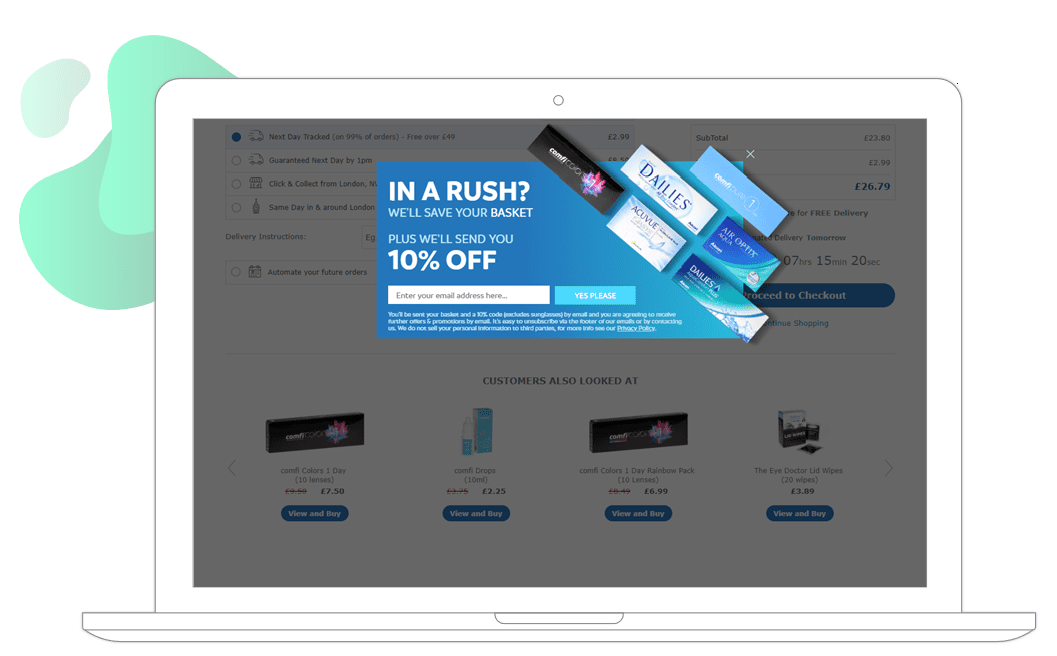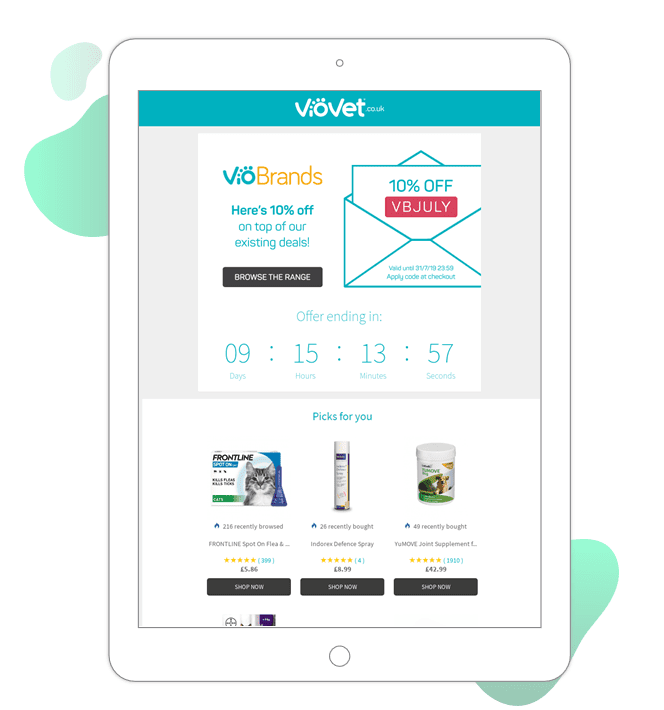Gone are the days of bombarding shoppers with blanket bulk emails. Personalization has become a staple of all good marketing emails and subscribers around the world are truly grateful. But with a staggering 306 billion emails being sent each day, and consumers’ rising expectations for tailored customer experiences, email marketers still have to go the extra mile if they want to catch shoppers’ attention.
If you’re looking to advance beyond adding your recipient’s first name to your marketing emails, read on for our 4 steps to getting started with email personalization. Find out how to grow your subscriber base, split your subscribers into meaningful segments, and implement conversion-boosting email personalization tactics.
1. Data capture
Successful email personalization starts with collecting quality email addresses for your database. The use of a pop-up or popover form on your website can contribute to this. In fact, Feel Good Contacts increased newsletter sign-ups by 333% with their targeted popovers.
Timing and context are key considerations when implementing a data capture program. Your pop-ups and popovers will be most effective when they are prompted by shoppers’ actions and inactions, and should be triggered based on when they will have the most impact. In this example, Feel Good Contacts triggers their popover at the moment of cart abandonment, offering their shopper the option to save their basket.

2. Segmentation
Segmentation allows marketers to take control of customer data to drive revenue and improve the customer experience by delivering highly relevant content to shoppers at the moment they are most engaged.
With the huge amount of data available at the average marketer’s fingertips, there’s no excuse to still segment subscribers by age, gender or postal address. Instead, try segmenting customers based on favorite colors, preferred price points, and frequently visited pages, for example.
When targeting content based on segments, rules should be set up to ensure that customers are not shown content promoting something they have already bought. It’s vital that data from all your customer touchpoints is collected and coordinated in real time, so a shopper can be removed from a segment as soon as they have converted.
3. Personalization tactics
Once you’ve collected your quality email addresses and segmented those subscribers, it’s time to make your emails sparkle with personalization. There are plenty of personalization tactics to choose from, but here are a couple of places to start:
Personalized product recommendations
Not all product recommendations are personalized, and while there’s value in recommendations based on bestsellers and items on sale, personalized product recommendations can have a greater impact on email revenue. Here are the stats to prove it. Vision Direct increased click-throughs by 557% with personalized product recommendations in their emails.
Recent research found that over 1 in 3 consumers want to see products and offers featured in marketing emails based on items they purchased. Try using past browse and purchase data to personalize product recommendations in your marketing emails, or show your customers products based on what shoppers like them purchase.
Viovet adds a personalized touch to their email newsletters by highlighting top picks for each individual based on their past purchase and browse data.

Personalized banners
Your hero banner is the one and only chance you have to make a good first impression on your recipient. And since the human brain processes visuals 60,000 times faster than text, it pays to use your banner wisely. Catch your recipient’s attention with a hero banner that caters to their interests and brand preferences, for example tailoring the imagery to their favorite brand or product category. Or try using contextual data to display weather-appropriate content.
Animed Direct used a dynamic banner that pulled in the name of the customer’s pet for their Christmas launch email.

Learn more: 5 email personalization tactics for eCommerce
4. Testing and optimization
Email personalization isn’t a case of set and forget. To maximize the effectiveness of your email personalization efforts, you’ll need to test, measure and optimize campaigns on an ongoing basis. Set up A/B testing and control groups to work out how your email content is contributing to engagement and sales, and make sure you set KPIs so you can decide on the winning variation using real data.
One Fresh Relevant client used A/B testing in their shopping abandonment emails to measure the difference between dynamic subject lines featuring the carted and browsed brand and subject lines containing name personalization. They found that during the festive period, dynamic subject lines containing the browsed brand outperformed subject lines with name personalization by an impressive 209%, demonstrating the importance of testing the best tactics for your business.
With consumers becoming increasingly eager for tailored customer experiences, and their inboxes becoming increasingly stuffed, email marketers need to pull out all the personalization tactics in their email marketing toolkit.
The 4 steps listed here can serve as a starting point in your email personalization journey, or as a checklist to ensure you’re maximizing the personalization potential of your marketing emails.
For more email personalization tips and tricks and top campaign examples from leading brands, download our guide: 6 ways to drive more email revenue.






